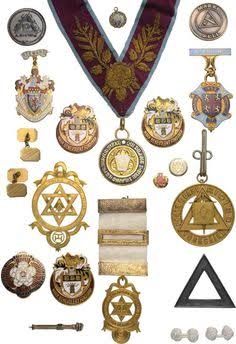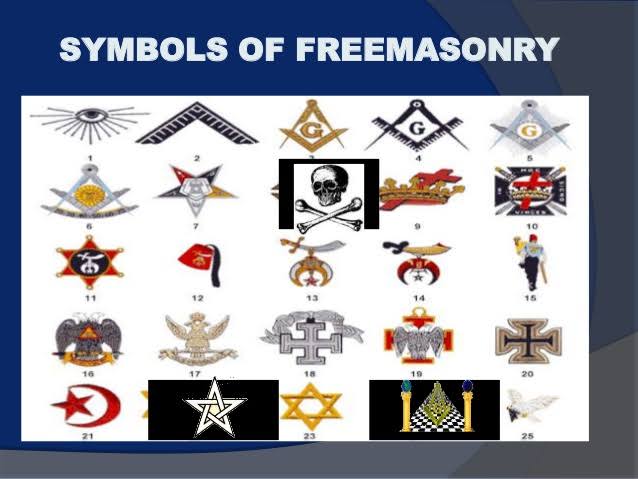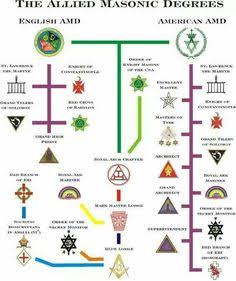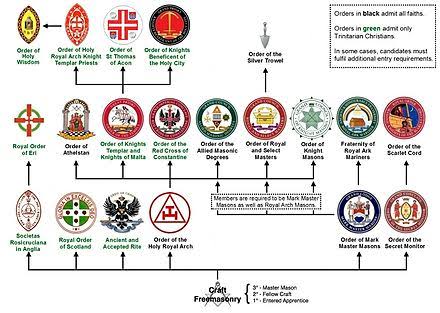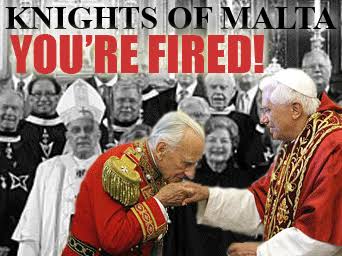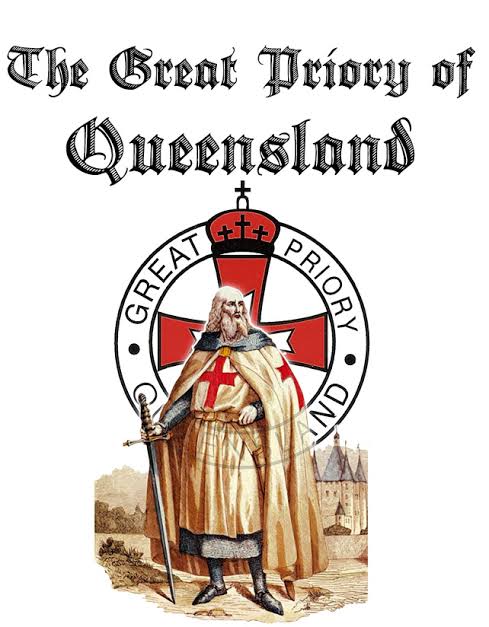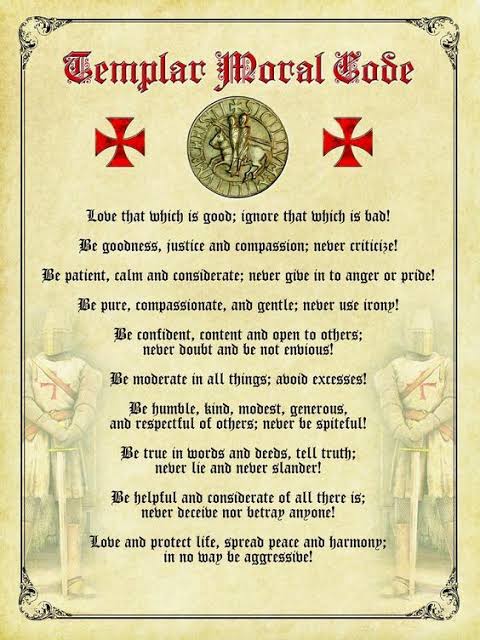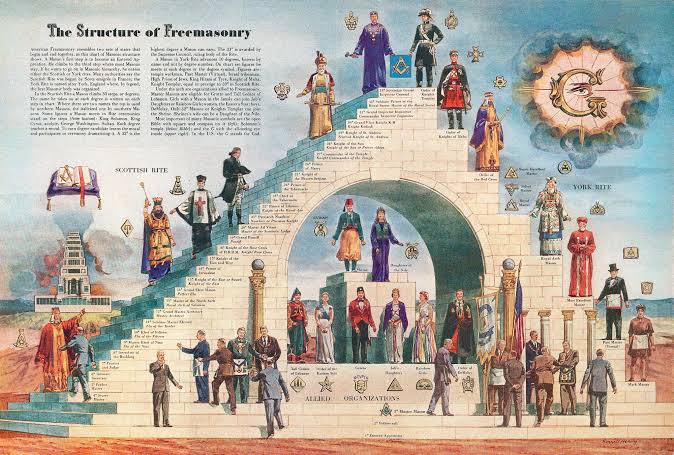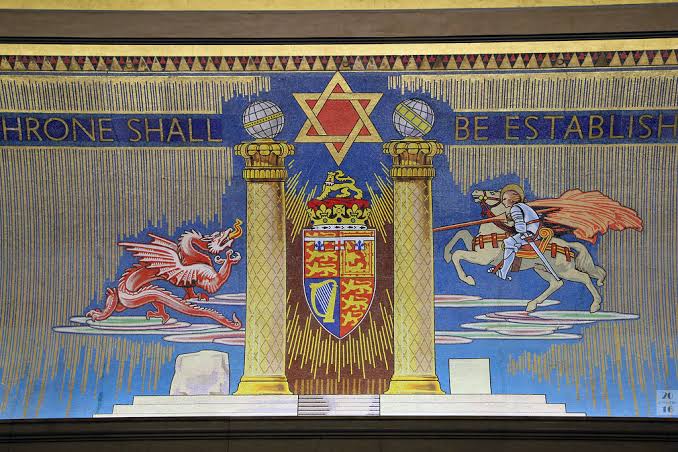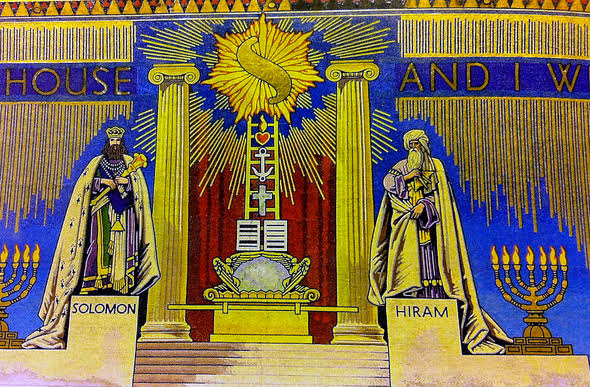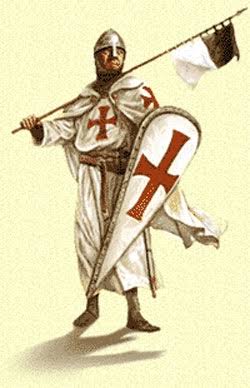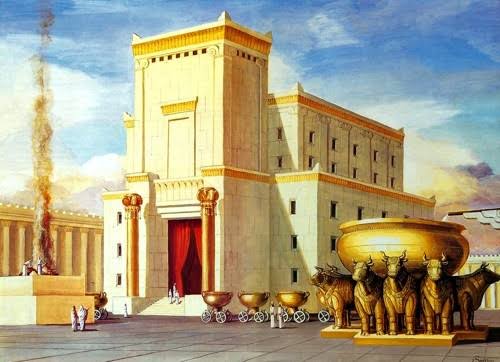
Knights Templar
During medieval times the Holy Lands and the city of Jerusalem were ruled by the Seljuk Turks
The Christian catholic church was not happy about this situation and they were determined to reclaim the Holy Lands and Jerusalem for the Christian faith as it was considered the place where Jesus lived and died.
Pope II Urban called out to the warriors of Christian medieval Europe to send their troops to reclaim the Holy Lands and the Crusades began!

To protect the Holy Lands for Christian Pilgrims, the ‘Order of the Knights Templar’ and the ‘Knights of Saint John’, was formed
The Knights Templar was a large organization of devout Catholic Christians during the medieval era who carried out an important mission: to protect European travelers visiting sites in the Holy Land while also carrying out military operations. A wealthy, powerful and mysterious order that has fascinated historians and the public for centuries, tales of the Knights Templar, their financial acumen, their military prowess and their work on behalf of Catholic Christianity during the Crusades still circulate throughout modern culture.

Who Were the Knights Templar?
After Christian Catholic armies captured Jerusalem from Muslim control in 1099 during the Crusades, groups of pilgrims from across Western Europe started visiting the Holy Land. Many of them, however, were robbed and killed as they crossed through Muslim-controlled territories during their journey.
Around 1118, a French knight named Hugues de Payens created a military order along with eight relatives and acquaintances, calling it the Poor Fellow-Soldiers of Christ and the Temple of Solomon—later known simply as the Knights Templar.
With the support of Baldwin II, the ruler of Jerusalem, they set up headquarters on that city’s sacred Temple Mount, the source of their now-iconic name, and pledged to protect Christian visitors to Jerusalem.
The Pope’s Endorsement

Initially, the Knights Templar faced criticism from some religious leaders. But in 1129,however the group received the formal endorsement of the Catholic Church and support from Bernard of Clairvaux, a prominent French abbot.
Lets look a little deeper.

The Knights Templar, established c. 1119 CE and given papal recognition in 1129 CE, was a Catholic medieval military order whose members combined martial prowess with a monastic life for the purpose of defending Christian holy sites and pilgrims in the Middle East and elsewhere. The knights, with their headquarters at Jerusalem and then Acre, were an important and elite element of Crusader armies, and they came to control both castles and lands in the Levant and across Europe. Accused of heresy, corruption, and performing forbidden practices, the order was attacked in France by King Philip IV (r. 1285-1314 CE) on Friday 13 October 1307 CE and then officially disbanded by Pope Clement V (r. 1305-1314 CE) in 1312 CE.
Foundation & Early History
The order was formed c. 1119 CE when seven knights, led by a French nobleman from Champagne, Hugh of Payns, swore to defend Christian pilgrims in Jerusalem and the Holy Land and so created a brotherhood who took monastic vows and lived together in a closed community. In 1120 CE Baldwin II, the king of the Kingdom of Jerusalem (r. 1118-1131 CE), gave the knights his palace, the former Aqsa Mosque on the Temple Mount of Jerusalem, for use as their headquarters. The building was commonly referred to as ‘The Temple of Solomon‘ and so the brotherhood quickly became known as ‘the Order of the Knights of the Temple of Solomon’ or simply the ‘Templars’.
Officially recognised as an order by Pope Honorius II (r. 1124-1130 CE) at the Council of Troyes in January 1129 CE (the first such military order to be created), the Templars were initially considered a branch of the Cistercians. In 1145 CE, knights of the order were granted permission to wear the white hooded-mantle Cistercian monks had made their own. The knights soon adopted their distinctive white cloak and they began to use the insignia of a red cross on a white background. There was no impediment to fighting as regards to religious doctrine, provided that the cause was a just one – the Crusades and defence of the Holy Land being just such a cause – and so the order received the official support of the Church. The first major battle involving Templar knights was in 1147 CE against the Muslims during the Second Crusade (1147-1149 CE). DONATIONS TO THE ORDER CAME IN ALL FORMS, BUT MONEY, LAND, HORSES, MILITARY EQUIPMENT, & FOODSTUFFS WERE THE MOST COMMON.

The order grew thanks to donations from supporters who recognised their important role in the protection of the small Christian states in the Levant. Others, from the humblest to the rich, gave what they could to simply help ensure both a better afterlife and, because donors could be mentioned in prayer services, perhaps a better life in the here and now. Donations came in all forms, but money, land, horses, military equipment, and foodstuffs were the most common. Sometimes privileges were donated which helped the order save on its own expenses. The Templars invested their money, too, buying revenue-producing properties so that the order came to own farms, vineyards, mills, churches, townships or anything else they thought a good investment.
Another boost to the order’s coffers was booty and new land acquired as the result of successful campaigns while tribute could also be extracted from conquered cities, lands controlled by Templar castles, and weaker rival states in the Levant. Eventually, the order was able to establish subsidiary centres in most of the states of western Europe, which became important sources of revenue and new recruits.

Money may have poured in from all corners of Europe but there were high costs to be met, too. Maintaining knights, their squires, horses (knights often had four each), and armour and equipment were all drains on the Templars’ finances. There were taxes to be paid to the state, donations to the Papacy, and sometimes tithes to the church, as well as payoffs to be made to local dignitaries, while performing masses and other services had their not insignificant costs, too. The Templars also had a charitable purpose and were supposed to help the poor. One-tenth of bread produced, for example, was distributed to the needy as alms. Finally, military disasters resulted in losses of both men and property in enormous quantities. The exact accounts of the Templars are not known, but it is more than likely that the order was never quite as rich as everyone thought they were.
From the mid-12th century CE, the Templars widened their influence and fought in the crusade campaigns in Iberia (the ‘Reconquest’) for various rulers in Spain and Portugal. Also operating in the Baltic crusades against pagans, by the 13th century CE the Knights Templar owned estates from England to Bohemia and had become a truly international military order with tremendous resources at its disposal (men, arms, equipment, and a sizeable naval fleet). The Templars had established a model which would be copied by other military orders such as the Knights Hospitaller and Teutonic Knights. There was one area, though, in which the Templars truly excelled: banking.

The Crusades
Skilled with the lance, sword and crossbow, and well-armoured, the Knights Templar and other military orders were the best trained and equipped of any members of a Crusader army. For this reason, they were often deployed to protect the flanks, vanguard and rear of an army in the field. The Templars were particularly renowned for their disciplined group cavalry charges when, in tight formation, they blasted through enemy lines and caused havoc which could then be exploited by allied troops following up their advance. They were also highly disciplined both in battle and in camp, with severe penalties imposed on knights not following orders, including expulsion from the order for losing one’s sword or horse through carelessness. That being said, the order as a whole could prove difficult for a Crusade commander to keep check on, given that they were often the most zealous and eager troops to win honour and glory.

The Templars were frequently given the task of defending important passes such as at Amanus north of Antioch. They acquired lands and castles which the Crusader states were not able to maintain themselves for lack of manpower. They also rebuilt destroyed or entirely new castles to better defend the Christian East. The Templars never forgot their original function as a protector of pilgrims either, and they manned many small forts along the pilgrim routes in the Levant or acted as bodyguards.
Although involved in many successes such as the siege of Acre in 1189-91 CE, Damietta in 1218-19 CE, and Constantinople in 1204 CE, there were some major defeats along the way, and such was their martial reputation, the Templars could usually expect to be executed if ever captured. At the battle of La Forbie in Gaza in October 1144 CE, an Ayyubid army defeated a large Latin army and 300 Templar knights were killed. 230 captured Templar knights were beheaded after the Battle of Hattin in 1187 CE, won by the army of Saladin, Sultan of Egypt and Syria (r. 1174-1193 CE). More important members of the order, as was typical of the period were offered up for ransom. The Templar castle at Gaza had to be given up in order to gain release of the captured Master after the same battle. Another heavy defeat came at 1250 CE the battle of Mansourah in Egypt during the Seventh Crusade (1248-1254 CE). The vast network of convents, though, always seemed able to replenish any losses in resources and manpower.
Criticism, Trial & Abolition
Largely a law unto themselves and a powerful military threat, western rulers became wary of the military orders, especially as they began to accumulate a huge network of lands and cash reserves. Like other military orders, the Templars had also long been accused of abusing their privileges and extorting the maximum profit from their financial dealings. They were accused of corruption and succumbing to gross pride and avarice. Critics said they lived too soft a life and wasted money which could be better spent on maintaining troops for Holy War. They were accused of wasting resources to compete with rival orders, especially the Hospitallers. There was, too, the old argument that monks and warriors were not a compatible combination. Some even chastised the order for not being interested in converting Muslims but simply eliminating them. Most of these criticisms were based on ignorance of the affairs of the order, an exaggeration of their actual wealth in real terms, and a general feeling of jealousy and suspicion.
King Solomon Connection
12 Facts about King Solomon’s Temple
If you study theology and history, then there is absolutely no way that you wouldn’t have heard about the temple of King Solomon.
The building was commissioned by King Solomon himself, and at the time, it was thought to be the royal palace of God. The exact location is still unknown to this day, but its significance to both modern culture and freemasonry can’t possibly be overstated.
So, for those who might not know much about it, here are some significant facts about the Temple that will definitely raise an eyebrow.

Now, before we dive into things, it is important to point out that some details might not be so accurate. Some historians even debate whether the temple actually existed. So, just keep that in mind.Read more: Secret Societies & Organizations similar to The Freemasons
1. The actual size of the Temple
Records estimate that the Temple was about sixty cubits long, thirty cubits high, and twenty cubits wide.

Scholars and historians have debated over the dimensions of the temple. However, most people agree on this.
2. When was the temple built
The Hebrew Bible suggests that the temple was first built in the fourth year of the ear of King Solomon, which was about 970 BC.
3. Who built the temple?
The building was bankrolled by King Solomon, but the Scripture reveals that the temple was built by eight thousand stonecutters and seventy thousand carriers.
4. The location of the temple
No one knows where the exact location of the temple is, but it is said to have been located in ancient Jerusalem.

Still, there isn’t any archaeological proof of the temple’s existence to this day. All we have to go by are the texts contained in the religious books.
5. How long it took for the temple to be built
Again, keep in mind that there is no accurate date to go by. However, the 1st Kings version reveals that it took eleven years for the temple to be built. However, some historians believe that it was constructed in just seven years.
6. Mount Moriah
As we’ve stated, there remains no solid evidence of where the location was located. However, experts believe that the temple was first built on Mount Moriah in 950-970 BC.

7. Did King Solomon keep the ark?
Many people believe that King Solomon brought the Ark of the Lord’s Covenant into the temple after it was completed. Some historians also claim that the king invited every Israeli to the temple and encouraged them to sacrifice their cattle and sheep.

In this ritual, the king said a prayer of dedication to God, asking him to make him ruler forever.
8. How the temple looked
Sadly, no one knows how the temple looked. However, some believed that it was built according to Phoenician design. Similar to this:
9. The temple in the history books
Other religious books apart from the Bible have also shed light on the temple. There are details in the Hebrew Bible and the Holy Quran (in Surah Al-Isra).

10. The Temple links to Freemasonry
The Temple is also significant to Freemasonry. Freemasons are known to call their Masonic buildings or lodges “Temples.” Their rituals also refer to King Solomon. Freemasons also work several degrees which are connected to the origin of the temple as well. They believe that it is a significant edifice that depicts man’s faith in God.
11. Did Hiram Abiff build the temple?
The Freemasons believe that the temple was built by Hiram Abiff, and a lot of experts agree as well.
Masonic degrees contain a tale about him, which begins with his arrival in Jerusalem and how he honed his craft.
12. The palace of the king
Some people believe that the temple was also the palace of the king, and this isn’t true at all.
In fact, the temple was built next to the king’s palace. There are several unique things about it, such as a movable bronze basin, lampstands, and a golden tale for the bread of the presence.

The Knight Templars & the Knights of Malta
A sovereign military order wielding unusual power

The secret about the Templars would not be if it had not been made to be by circles and powers who had and have an understandable interest – from their point of view – to keep the truth in obscurity. Originally known as the Knights Hospitaller, the Sovereign Military Hospitaller Order of Saint John of Jerusalem of Rhodes and of Malta was founded in the 11th century in Jerusalem, where it protected Christian pilgrims visiting the Holy Sepulchre. When the Holy Land was lost to the Saracens in 1291, the Hospitallers moved to Cyprus and then Rhodes.
Knights Templar

Before 1307 the Knights Templar – together with the Knights of St. John of Jeruzalem and in part the Teutonic Knights (these two were originally charitable orders) – were leading organizations behind the crusades in the middle east. Although these orders were at the beginning hostile to each other, they fought together for Christianity.
Two very devout men stood at the foundation of the Order of the Knights Templar: Hugues of Payens and Geoffroy de St. Omer, a Frank and a Norman. They gathered a group of mates spirited by faith. In 1117 these men decided to form a group for the proper protection of pilgrims in Jerusalem.
It was their solely wish to serve the Lord Jesus Christ as well as the faith. The group of nine knights, remained rather alone, while they had no protection, nor sufficient funds. The group went to Baldwin I, king of Jerusalem, and to the patriarch. Their intention was admired and praised, and – after having lived in the “German House”, a hospital run by Germans – they were soon given residences on the ancient site of the Temple of Jeruzalem. And even though this gotten them the name of Knights Templar, they always saw themselves to be the Brothers of the true Temple of Christ.
The Order of Malta is one of the few Orders created in the Middle Ages and still active today. It is also the only one that is at the same time religious and sovereign. This is due to the fact that most of the other Orders of chivalry lacked the hospitaller function which characterises the Order of Malta, so they disappeared as soon as the military purposes that represented the reasons for their existence ceased.
The Knights of Malta

The knighthood nature explains and justifies the maintenance of the noble nature of the Order, as most of its Religious Knights came from chivalrous and noble Christian families. Today the majority of Knights of Malta belong to all classes of society. The members of the Order may be defined as Catholics enlivened by altruistic nobleness of spirit and behaviour. All Knights of Malta must meet the traditional requirement for the bestowing of knighthood: distinguish themselves for special virtues. The knighthood nature of the Order has kept its moral value, characterised by the spirit of service, sacrifice and discipline of today’s Knights of Malta. Battles are no longer fought with swords, but with the peaceful tools of the fight against disease, poverty, social isolation and intolerance, as well as witnessing and protecting the faith.
Wherever they settled, the Knights Hospitallers always established first a Hospital and Hospice and then, if necessary, built defence fortifications. In the Third Millennium being a Hospitaller means dedicating oneself to easing suffering and to bringing the balm of Christian charity to the sick, anywhere in the world, not only in hospitals but also in private homes and nursing homes in the shantytowns of destitute populations. The Order does not only dedicate itself to the sick, but also to the socially isolated, the victims of persecution and the refugees of any race and religious faith.
All the 13,500 Knights and Dames of the Order of Malta shall conduct themselves so as to give Christian example in their private and public lives, thus putting into effect the tradition of the Order. It is incumbent on them to collaborate effectively in its hospitaller and social works.
More refrence materials
- Who Were the Knights Templar?
- The Pope’s Endorsement
- The Knights Templars at Work
- Expanded Duties of the Knights
- The Fall of the Knights Templar
- Arrests and Executions
- The Knights Templar Today
- Sources:
https://masonicvibe.com/blog/12-facts-about-king-solomons-temple-2/
https://www.ancient.eu/Knights_Templar/
